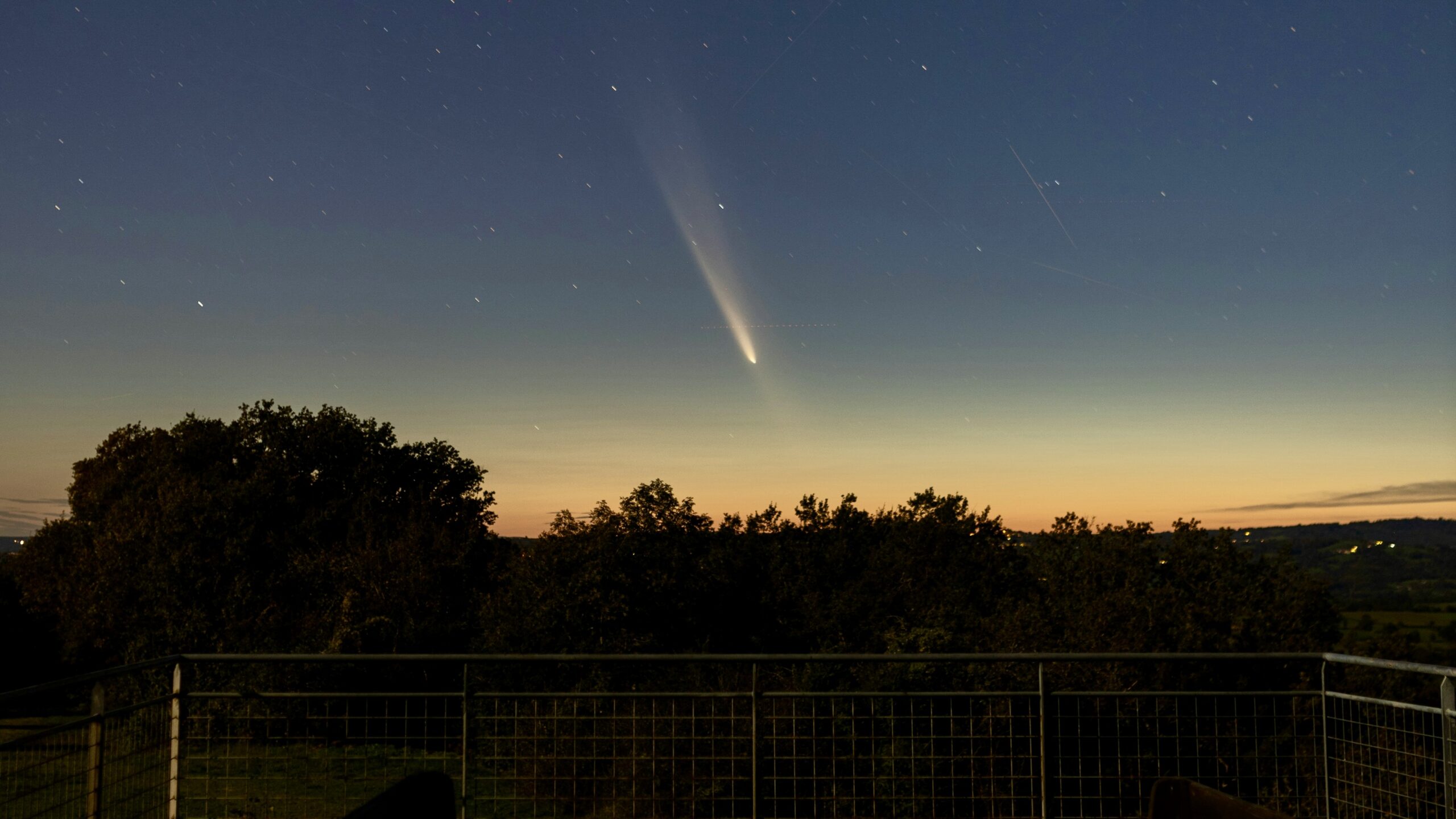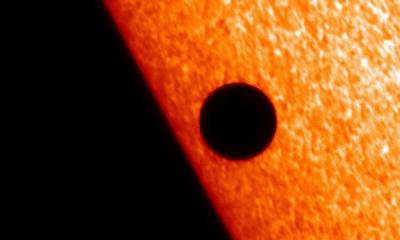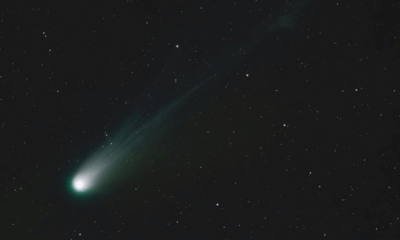Science
Comet 3I/ATLAS Approaches Sun: Unseen Spectacle for Earth

A rare celestial event is unfolding as comet 3I/ATLAS makes its closest approach to the Sun. On October 30, 2023, the comet will reach perihelion, the point in its trajectory where it is nearest to our star. This moment is expected to be the comet’s most active phase. Unfortunately for sky-watchers on Earth, the comet is currently obscured by the Sun’s blinding glare, rendering it invisible from our vantage point.
While observers on Earth are missing out, a network of robotic missions across the solar system will have a unique perspective on the event. At perihelion, comet 3I/ATLAS will be positioned approximately 1.35 astronomical units (about 125 million miles or 202 million kilometres) from the Sun. This close encounter significantly impacts the comet’s behaviour, as the Sun’s intense heat causes ice on its surface to sublimate, transforming into gas and creating a glowing cloud known as a coma. The resulting outgassing often leads to the formation of two distinct tails: one composed of dust and another made of charged particles driven by the solar wind.
The visibility of 3I/ATLAS has diminished for terrestrial observers since it entered solar conjunction in late September, effectively disappearing behind the Sun. It is not expected to reappear in the morning sky until late November or early December. Consequently, telescopes on Earth, including those in orbit like the Hubble and James Webb Space Telescopes, will miss the comet’s peak activity.
Robotic Missions Positioned to Observe
Fortunately, several missions are well-positioned to capture this extraordinary event. Spacecraft currently orbiting Mars will have a clear view of the hemisphere of the Sun that 3I/ATLAS is navigating. These missions witnessed the comet’s close approach to Mars on October 3, 2023, when it passed just 0.19 AU (approximately 17.6 million miles or 28.4 million kilometres) from the Red Planet.
In addition, NASA’s Psyche mission, which is en route to its namesake asteroid, and the Lucy mission, heading towards Jupiter’s Trojan asteroids, will also be able to observe the perihelion. The European Space Agency’s (ESA) Jupiter Icy Moons Explorer (JUICE) probe is also heading in the general direction of the comet following a recent flyby of Venus. However, JUICE is currently using its primary antenna as a sun shield for protection, meaning any data collected will not be transmitted back to Earth until February 2024.
Scientific Insights from Outgassing
Scientists are particularly interested in the chemical composition of 3I/ATLAS. The gas and dust released during the outgassing process offer a rare glimpse into the comet’s origins, which trace back over seven billion years. Preliminary findings suggest that 3I/ATLAS contains higher levels of carbon dioxide compared to comets that are native to our solar system, along with an increased abundance of nickel. These disparities allow researchers to draw comparisons between the comet’s chemistry and that of our solar system.
The peak activity at perihelion might also yield new discoveries. Astronomers are particularly attentive to the potential emergence of iron emissions, which have not yet been observed. When 3I/ATLAS emerges from the Sun’s glare in late November, it may still exhibit significant activity. Although comets are notoriously unpredictable, it is anticipated that the comet will be faint, with a predicted magnitude of 12, likely too dim for casual backyard telescopes but accessible for astro-imagers and those utilizing advanced telescopes.
The powerful optics of the Hubble and James Webb Space Telescopes should easily capture this elusive visitor, potentially providing new insights into the early solar system and the nature of interstellar comets. As 3I/ATLAS approaches its perihelion, scientists worldwide remain poised to uncover the secrets this ancient traveler holds.
-

 Entertainment2 months ago
Entertainment2 months agoAnn Ming Reflects on ITV’s ‘I Fought the Law’ Drama
-

 Entertainment3 months ago
Entertainment3 months agoKate Garraway Sells £2 Million Home Amid Financial Struggles
-

 Health2 months ago
Health2 months agoKatie Price Faces New Health Concerns After Cancer Symptoms Resurface
-

 Entertainment2 months ago
Entertainment2 months agoCoronation Street’s Carl Webster Faces Trouble with New Affairs
-

 Entertainment2 months ago
Entertainment2 months agoWhere is Tinder Swindler Simon Leviev? Latest Updates Revealed
-

 Entertainment3 months ago
Entertainment3 months agoKim Cattrall Posts Cryptic Message After HBO’s Sequel Cancellation
-

 Entertainment2 months ago
Entertainment2 months agoOlivia Attwood Opens Up About Fallout with Former Best Friend
-

 Entertainment2 months ago
Entertainment2 months agoMasterChef Faces Turmoil as Tom Kerridge Withdraws from Hosting Role
-

 Entertainment3 months ago
Entertainment3 months agoMarkiplier Addresses AI Controversy During Livestream Response
-

 Entertainment3 months ago
Entertainment3 months agoSpeculation Surrounds Home and Away as Cast Departures Mount
-

 World2 months ago
World2 months agoCole Palmer’s Mysterious Message to Kobbie Mainoo Sparks Speculation
-

 Entertainment2 months ago
Entertainment2 months agoITV’s I Fought the Law: Unraveling the True Story Behind the Drama




















